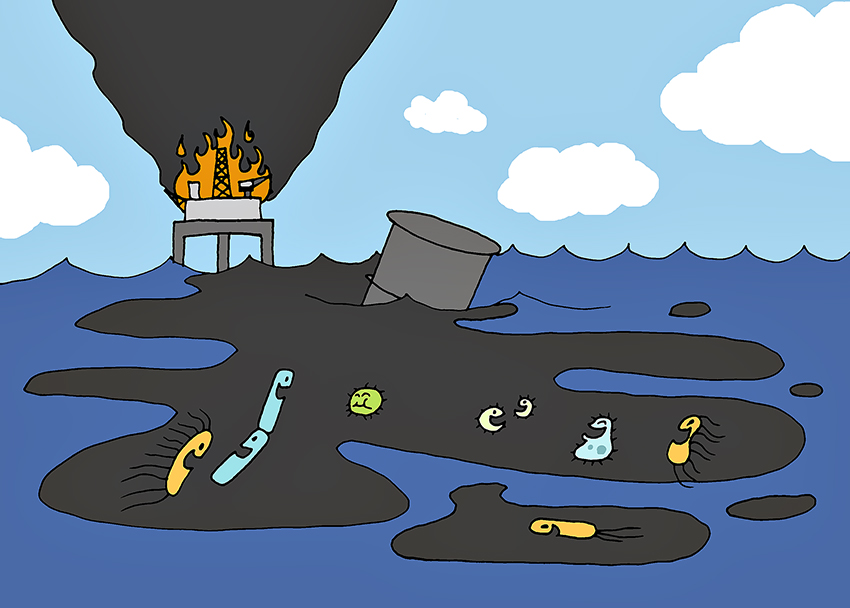Certain types of bacteria can assist in oil spill cleanups.
A team at UT’s Marine Science Institute recently sequenced the DNA of bacteria present during the Deepwater Horizon oil spill in 2010. The researchers hope that this information will make oil spill cleanup agencies more conscientious of the natural forces in the water working to remove oil.
Nina Dombrowski, postdoctoral researcher and lead author of a study detailing this work, said that the first step in learning more about these organisms was simply culturing and observing all the bacteria that were present during the Deepwater Horizon oil spill.
- “We went into the ocean, into the site when the spill happened, and sequenced the DNA of all the bacteria that was there and reconstructed genomes from that,” Dombrowski said. “We were really looking at the active community at that time and not only at individuals in isolation.”
Dombrowski said that different types of oil-consuming bacteria work together to clean up after the spill.
“We believe that one bacteria completes the initial step and then the oil molecule continues to be broken down by other bacteria, basically like in a chain of events,” Dombrowski said. “You need a mixture of bacteria to deal with all these substances.”
Dombrowski said that because oil has a complex structure, not one single bacterium can degrade the whole oil molecule by itself. Each bacteria completes a process that resembles how humans’ digestive systems break down food.
“It is a very similar process to what we would call eating,” Dombrowski said. “Basically, the bacteria take in the oil components, break them down with enzymes and make them into much simpler compounds that they integrate into their metabolism.”
While most bacteria are not complex enough to break down oil, some can feed on it.
Kiley Seitz, a graduate student researcher, observed the DNA sequences of the bacteria. She said the team looked at all the different types of bacteria through a general lens.
“The sequences ended up revealing some bacteria that were known to already degrade oil,” Seitz said. “But, we were also able to see other pathways [to breaking down oil] that other studies hadn’t seen before.”
Dombrowski said that these specific types of oil-degrading bacteria are already located at the spill site, just in low numbers.
“In the Gulf you have natural oil seepage, or around one million barrels of oil coming into the Gulf naturally each year, which feeds this local community,” Dombrowski said. “This is why you have these specific bacteria there normally, but during the spill you have much higher concentrations.”
Seitz said that the number of these oil-munching bacteria grow during an oil spill because they naturally become more abundant when their food source becomes more abundant.
Dombrowski and Seitz agreed that this current study can be used as a resource in determining what bacteria humans should be careful to protect when cleaning up after oil spills. Dombrowski said that the goal is to protect the parts of nature that are good at helping clean the oceans.
“I think this will have a positive effect on oil spills in the future,” Seitz said. “This information is good to know because if we can find a more natural way to remove oil spills, then we don’t have to worry about our efforts affecting the environment as well.”















